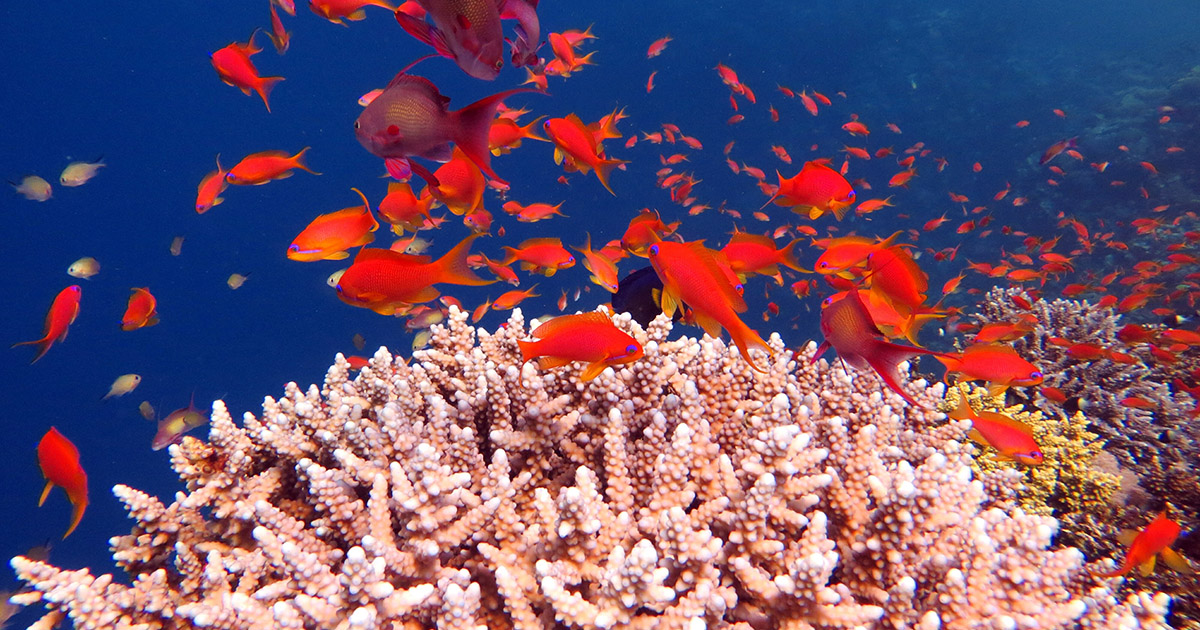Egypt has attracted the attention of the explorers of natural history due to its unique position midway between Africa and Asia, with its long coasts of the Mediterranean Sea in the north (c. 970 km) and the Red Sea in the east (c. 1,100 km). It is connected to the Mediterranean and sub- Saharan Africa by the way of Nile Valley, and to the tropical Indian Ocean through the Red Sea. It has diverse habitats with micro-climates that host many plant species and communities.
the land area of Egypt is composed of desert (92%) and agricultural land (8%). The country comprises 22 main habitat groups such as: Gebel Elba; Mountains and Wadies of the Eastern Desert; Red Sea Littoral Habitats; Red Sea Islands; Red Sea Marine Habitats; Mountains and Wadies of South Sinai; Central and North Sinai; Mediterranean Wetlands; Nile Valley and Delta; Gebel Uweinat and Gilf Kebir; Western Desert Depressions and Oases; Sand and Dunes of the Western Desert; Western Desert Mediterranean Coast and Mediterranean.
The River Nile is one of the largest rivers in Africa and is the longest river in the world, flowing 6825 km from southeast Africa to the north of Africa – its latitude extending from 4°S to 31°N (Fig. 10.1). Its basin embraces many climates from extreme arid – with annual rainfall of less than 1 mm in the Nubian part of Egypt and Sudan – to 1500 mm on the Ethiopian plateau, and as much as 1800 mm in the mountains of Rwanda and Burundi.
The Ecosystems and Habitats in Egypt:
1- Desert Habitat. The Sahara is the largest hot desert in the world and the third-largest desert overall, behind the cold deserts of Antarctica and the Arctic. The Sahara is one of the harshest environments on Earth, covering 3.6 million square miles (9.4 million square kilometers), an area about the size of the United States (including Alaska and Hawaii) and spanning nearly a third of the African continent.
Sahara species include Rhim Gazelle, Dorcas Gazelle (endangered) Nubian Ibex, Egyptian Vulture (endangered), Nubian Vulture (endangered), Barbary Sheep (endangered), jackals, wild boars, lynxes, mongooses, Aardwolf (hyenas), and jerboas, and the Saharan Horned viper and Hooded Snake.
2- Marine Habitat. The Red Sea is a long, narrow body of water extending about 1,305 miles (2,100 kilometers), with a central trough reaching depths of more than 6,562 feet (2,000 meters) and a continental shelf that is 984 to 1,312 feet (300 to 400 meters) deep or less. The Red Sea is home to over 1,200 species of fish, 10% of which are found nowhere else on Earth. The region's coral reefs are particularly exhibit remarkable resilience to climate change and warming waters. The Red Sea coral reefs are renowned for their unique structural formations and remarkable biodiversity, having evolved over the past 40 million years due to geological shifts. This region is home to approximately 346 species of hard corals, with around 6% being endemic.
Other fauna and flora in the Red Sea include green (Chelonia mydas), loggerhead (Caretta caretta), leatherback (Dermochelys coriacea), olive ridley (Lepidochelys olivacea), and hawksbill (Eretmochelys imbricata) sea turtles, which reportedly use the area to breed on the Sinai coast. Giant clams (Tridacna maxima) are common, and sharks (Selachimorpha), dolphins (Delphinidae), and the vulnerable dugongs (Dugong dugon) also live near the Red Sea's coral reefs.
The Red Sea is also an important ornithological site during spring and autumn migrations for many species of storks, ospreys, terns, herons, and gulls. Reports document sixteen species of marine mammals, 210 echinoderm species (8 percent endemic), 135 mollusks species (6.5 percent endemic), 230 crustacean species (10 percent endemic), 1,700 shallow fish species (3 percent endemic), and several species of mangroves.
3- Wetlands Habitat. Wetlands are areas of marsh, fen, peat-land or water, whether natural or artificial, permanent or temporary, with water that is static or flowing•, fresh, brackish or salt, including areas of marine water the depth of which at low tide does not exceed six meters.
Shores of the Red Sea: Mangrove woods, Coral beaches, Coral islands, and Suez Canal Zone lakes and hot water springs (Ain Sokhna and Ain Mousa). These wetlands are the most valuable diving places in the world.
The Nile Delta ecoregion is found in Northern Egypt. The region is very fertile and suitable for agriculture. Nile Delta has an abundance of wildlife ranging from water birds to crocodiles, turtles to mongooses. Plants such as the Egyptian Lotus and Papyrus Sedge inhabit the region. A wide variety of waterbirds, including the Northern Shoveler, Ferruginous Duck, Mallard, White Stork, Glossy Ibis, and various egrets and waders, rely on these wetlands.
4- Fresh Water Habitat**. Western Deserts lakes and Inland Oasis: Karoon Lakes, Wadi Al Rayaan, Wadi Al Natroon, and Al Magharrah Lakes.
Wadi Al Rayaan has an educational importance since many ancient life fauna and flora were existent within the peninsula and UNESCO protectS this area.
Lake Nasser in Aswan is located at the southern Egyptian borders and it was created after the dam construction. It is one of the largest artificial lake in the world. The lake is some 298 miles long and 9.9 miles across at its widest point, which lies near the Tropic of Cancer. It covers a total surface area of 2,030 square miles and has a storage capacity of around 32 cubic miles of water, or 132 cubic kilometres. Lake Nasser is recognized for its rich biodiversity, hosting numerous fish species and serving as an essential habitat for various migratory birds. The shores of the lake are lined with significant khors—shallow, meandering waters that support aquatic vegetation and serve as breeding grounds. The Nile crocodile that is considered to be one of the most aggressive species of crocodiles surviving today can be found in the Lake Nasser.

